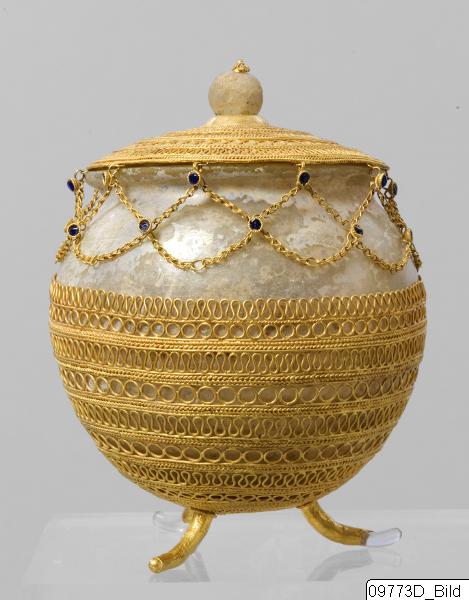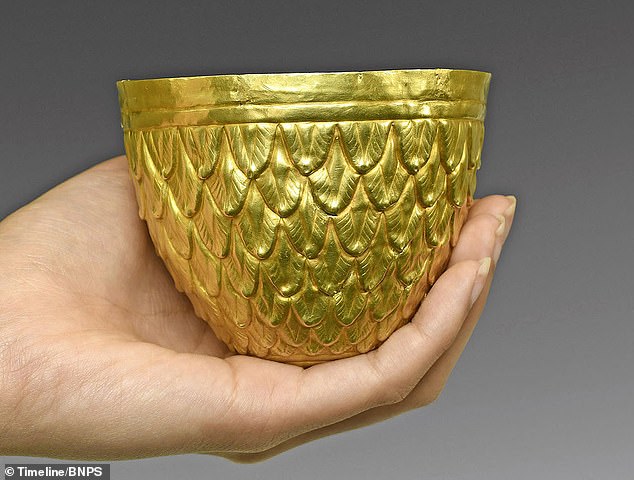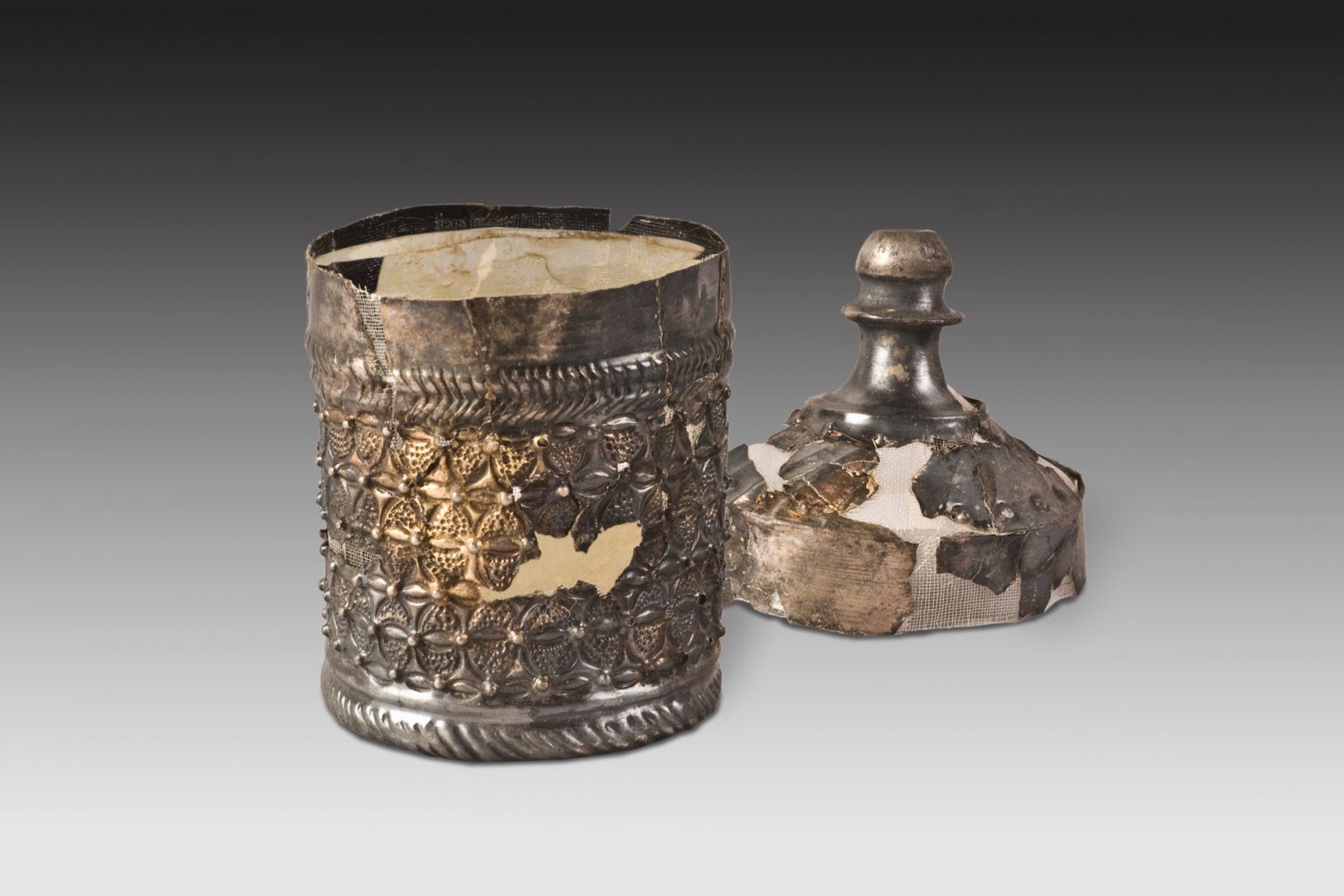The Bimaran reliquary casket






Underside of base of the Bimaran casket © Wannaporn Rienjang
The Bimaran casket is a small gold reliquary for Buddhist relics that was found inside the stupa no.2 at Bimaran, near Jalalabad in eastern Afghanistan. 8 figures under pointed arches are the representations of the Buddha with the Indian deities Brahma and Śakra in two identical groups, and two devotees or Bodhisattvas in-between.
Diameter at base 6.6 cm, height 6 cm. Gold and garnets, dated to the 1st century (ca. 50-60 CE).
The Bimaran casket: problems of production, an article by Wannaporn Rienjang, 2017 [link]
“One feature of the manufacture that links the Bimaran casket with traditions beyond India is perhaps the inlay of semi-precious stones inside sockets that were formed by separate sheets of gold joined to the body by soldering. This technique occurs on objects associated with Central Asian nomads or people from eastern Iran. Some examples are the gold and silver vessels in the al-Sabah Collection with rows of garnet inlays on the neck. The sockets for the inlays on these two vessels were made in the same manner as those on the Bimaran casket.”

Drawing by Charles Masson [source]
Another reliquary, the Begram stupa, is made in the same way as the Bimaran casket. According to Osmund Bopearachchi, it was found by a chance in Ai Khanoum, near the ancient city Begram in Afghanistan, and contained 25 gold coins: twenty-three Kushan and two Roman. The reliquary was made of gold and decorated with blue sapphire from Sri Lanka on the top of the lid, inlayed with garnet and [white] coral. It has dimensions: height 7.5 cm and diameter 5 cm. Based on the coins deposited in the stupa, the Begram reliquary is dated between 64-188 CE.
The Begram stupa



After Osmund Bopearachchi, From Bactria to Taprobane: Selected Works of Osmund Bopearachchi, vol. I. Central Asian and Indian Numismatics; vol. II. Art History and Maritime Trade; Manohar Publishers, New Delhi, 2015; pp. 600-611

From Alexander the Great to Imperial Kushans. Iconography and Language of their Monetary Issues
Osmund Bopearachchi https://www.academia.edu
Maritime Diffusion of Buddhist thought and Art; Osmund Bopearachchi https://www.academia.edu/
video: https://youtu.be/7Bk9Tdo45ZM?t=696
Silver casket of the king Vāsudeva. It is a pyxis made of a sheet of silver, is 6.4 cm high and 10.6 cm wide in its finished form. It was used as an incense container probably. Kushan, 2nd/3rd century, said to be from Tajikistan, bought from the Pakistani owner.
A Decorated Silver Pyxis from the Time of Vāsudeva, Harry Falk and Nicholas Sims-Williams, 2017 [academia.edu]
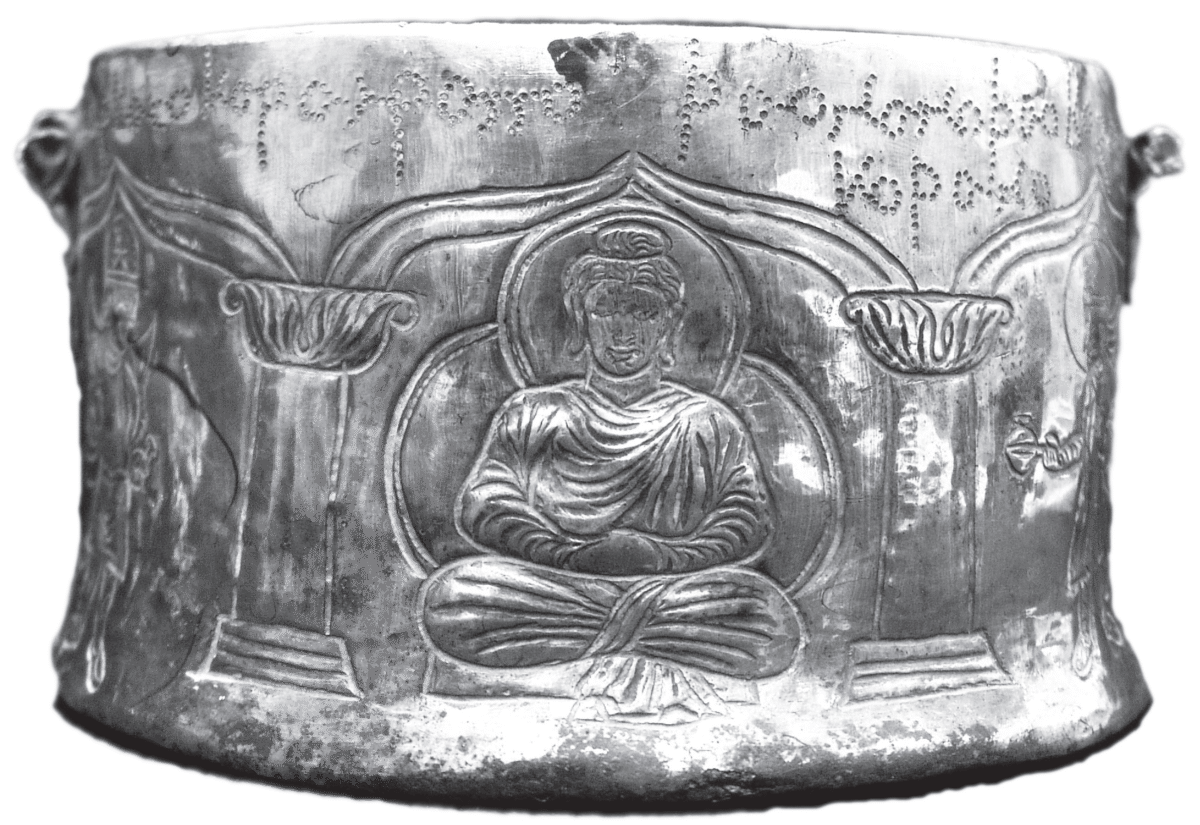
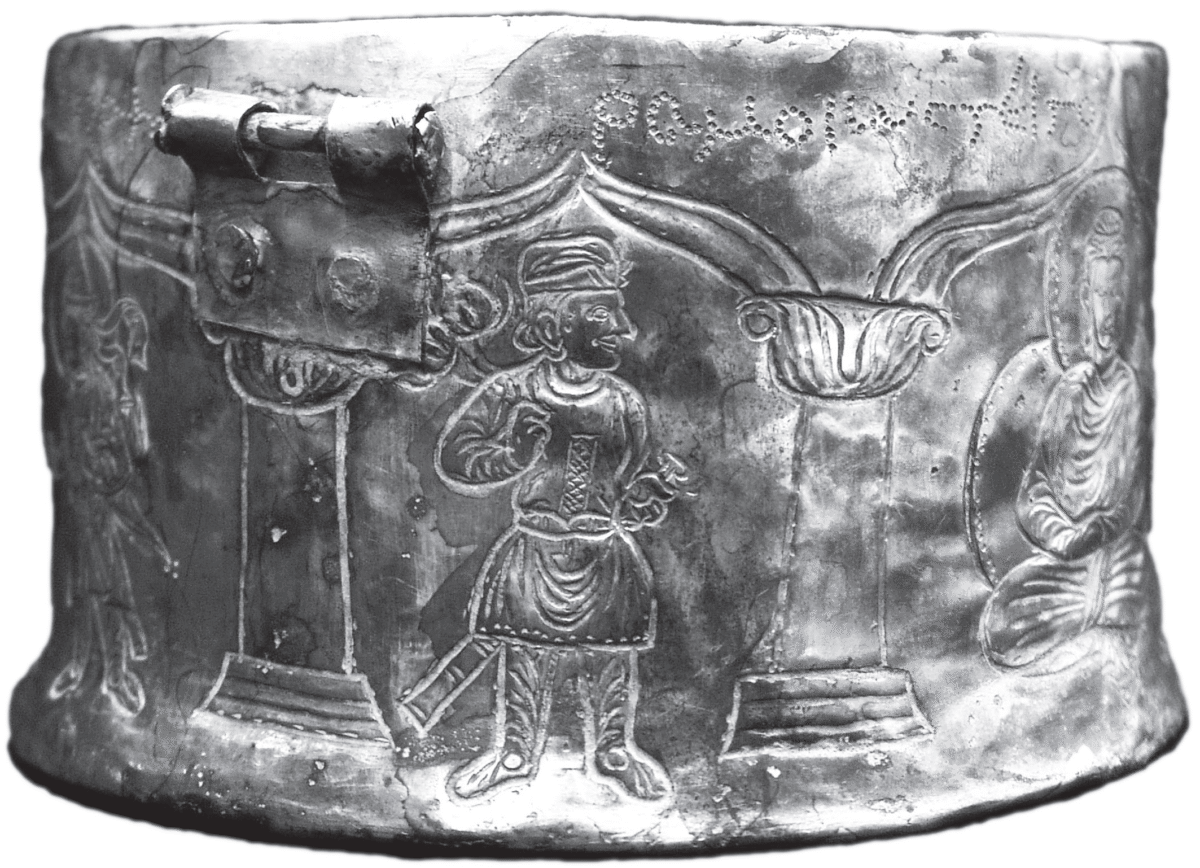
- From Bactria to Taprobane: Selected Works of Osmund Bopearachchi, vol. I. Central Asian and Indian Numismatics; vol. II. Art History and Maritime Trade; Manohar Publishers, New Delhi, 2015 https://www.academia.edu/
- Maritime Diffusion of Buddhist thought and Art; Osmund Bopearachchi https://www.academia.edu
video: https://youtu.be/7Bk9Tdo45ZM?t=696 - A Decorated Silver Pyxis from the Time of Vāsudeva, Harry Falk and Nicholas Sims-Williams, 2017 [academia.edu]
- The Bimaran casket: problems of production, an article by Wannaporn Rienjang, 2017 [link]
- Vakhtang Shatberashvili, ABOUT ONE GROUP OF GILT GLASS JUGS, pp. 192-200 in: [academia.edu]

